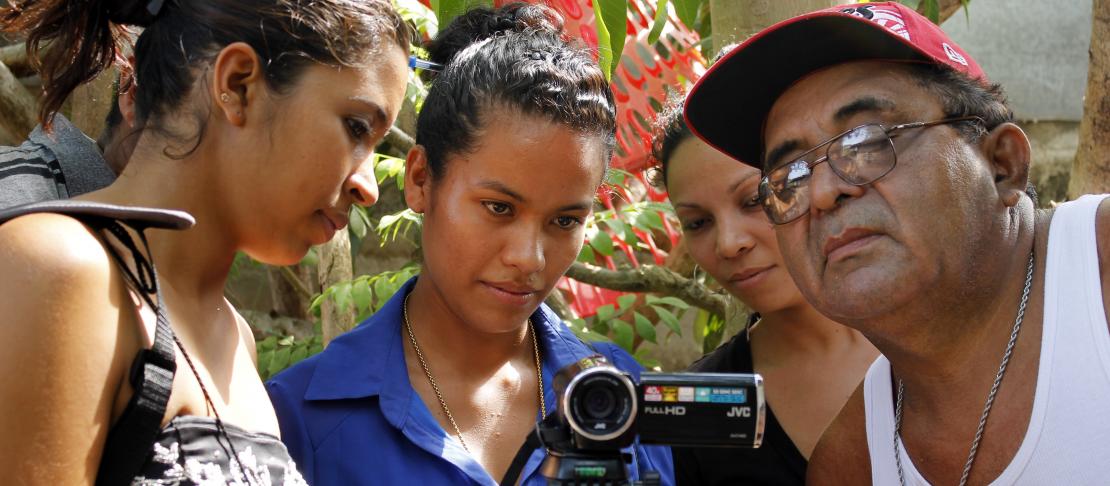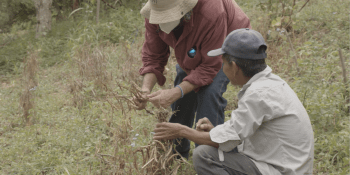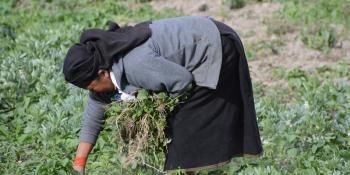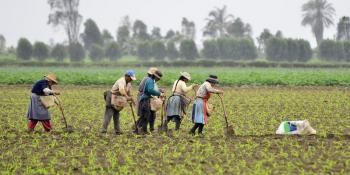Participatory Video: local perspectives on climate change

A recently published CCAFS working paper shows that Participatory Video is a successful methodology seeking local solutions to local problems through coming together, reflecting, communicating, and taking positive action.
Now, more than ever, it is important that researchers understand the local context and needs of local target groups in order to adequately adapt their climate change strategies to achieve long-term success.
Participatory video (PV) has proven to be an ideal participatory method that allows for a thorough understanding of local knowledge in order to identify the needs, hopes, and current knowledge of the community, resulting in the creation of climate change strategies that are adequately adapted to all layers of a heterogeneous community.

PV for empowerment
By giving all groups (i.e. women, men, youth, indigenous and/or marginalized members) the chance to be in charge of writing, directing and filming their own short video, community members are encouraged to explain, from their personal perspective, how the effects of climate change have manifested in their lives and in which ways they hope to improve in the future. Local community members are empowered through their active involvement in the climate change issues they face, which motivates them to implement sustainable development strategies that respond to their own needs and priorities. One of the participant farmers said:
When we went out to interview someone in the local hospital, they told us that they did not want to talk to any journalists. I told them we were only farmers, doing a Participatory Video project, but the lady kept on telling us that we had a notebook, a microphone and a videocamera, so we must be journalists. That made me feel really proud because I always wanted to be a journalist!
Bringing local voices to the global debate
PV brings local voices to the global climate change debate, inspiring confidence and respect across social groups by recognizing the fundamental importance of the local perspective. Furthermore, PV is an ideal medium to strengthen links between various organizations dedicated to strengthening local communities’ advocacy power, thus creating a strong network of support amongst the most vulnerable and marginalized populations. As part of the process, PV will highlight gender differences as they relate to relevant climatic issues, and will provide a deeper understanding of gender differences in climate change vulnerability. Researchers will utilize local knowledge as a valuable source of information: local proximity to nature will enable researchers to quickly recognize change and to explain more precisely the causes of this change and its effects on local agriculture (ISDR, 2008).

Having this in mind, a team of researchers from the International Centre for Tropical Agriculture (CIAT), CCAFS and the CGIAR Research Program on Integrated Systems for the Humid Tropics (Humidtropics) has conducted a PV project following the successful implementation of the Quesungual Agroforestry System in the community of La Danta in the Municipality of Somotillo (Department of Chinandega, Nicaragua). Its main objectives were to:
- Increase participants’ awareness of ways they can influence and mitigate the effects of climate change they are subject to.
- Empower local groups to take part in a process of analysis and response that celebrates indigenous knowledge and practice.
- Generate a better understanding of gender differences as they relate to climate change adaptation and mitigation.
- Generate knowledge and information that allows future projects in the region to better understand the local context when creating inclusive climate change mitigation and adaptation strategies that have a higher potential for success.
PV works especially well with young people
From this project it can be concluded that the PV tool works especially well with young people, who tend to naturally present a certain curiosity for technology and creative, imaginative ways to approach various subjects. The PV methodology gave them confidence and ensured all participants had a voice in the final video message. An element that resonated is that giving community figureheads a more prominent role in project dissemination activities can increase the adoption of new technologies.
Humidtropic's Shadi Azadegan pointed out: "Aside from being more effective than brief training sessions which may not necessarily be a part of a larger plan of long-term capacity development, it will help communities strengthen their trust in their indigenous knowledge."
The CCAFS Working Paper explaining the methodology and results from the Participatory Video project can be downloaded here.
For more information, see:
Photos showing the process of the project
Blog in Spanish: Jóvenes de Nicaragua cuentan su historia a través de videos participativos
Blog in English: Nicaraguan youths tell us their story through participatory video
Blog from CIAT: Deacachimba
Video explaining the methodology: Participatory video: Climate Change in Nicaragua - The making-of
Video made by the participants: Participatory video: Climate change in Nicaragua
The Participatory Video Project took place in La Danta, Chinandega, in the north of Nicaragua. The project was funded by CCAFS, Humidtropics and CIAT and was facilitated by Manon Koningstein (CIAT/CCAFS) and Shadi Azadegan (CIAT/Humidtropics). A second phase of the project has been funded by Humidtropics. Manon Koningstein is a Research Associate & Communications Specialist for the Gender & Climate Change team at CIAT.




